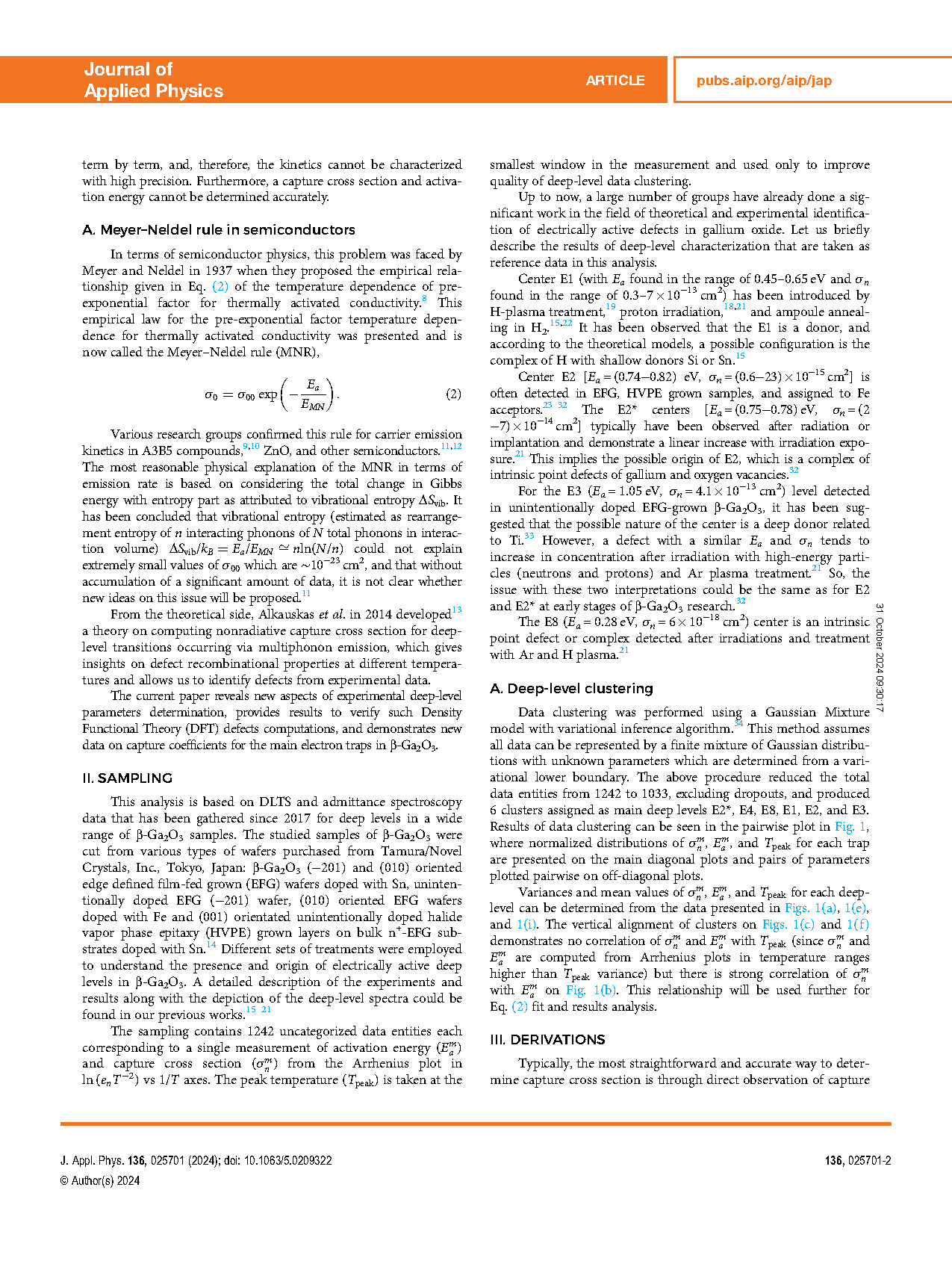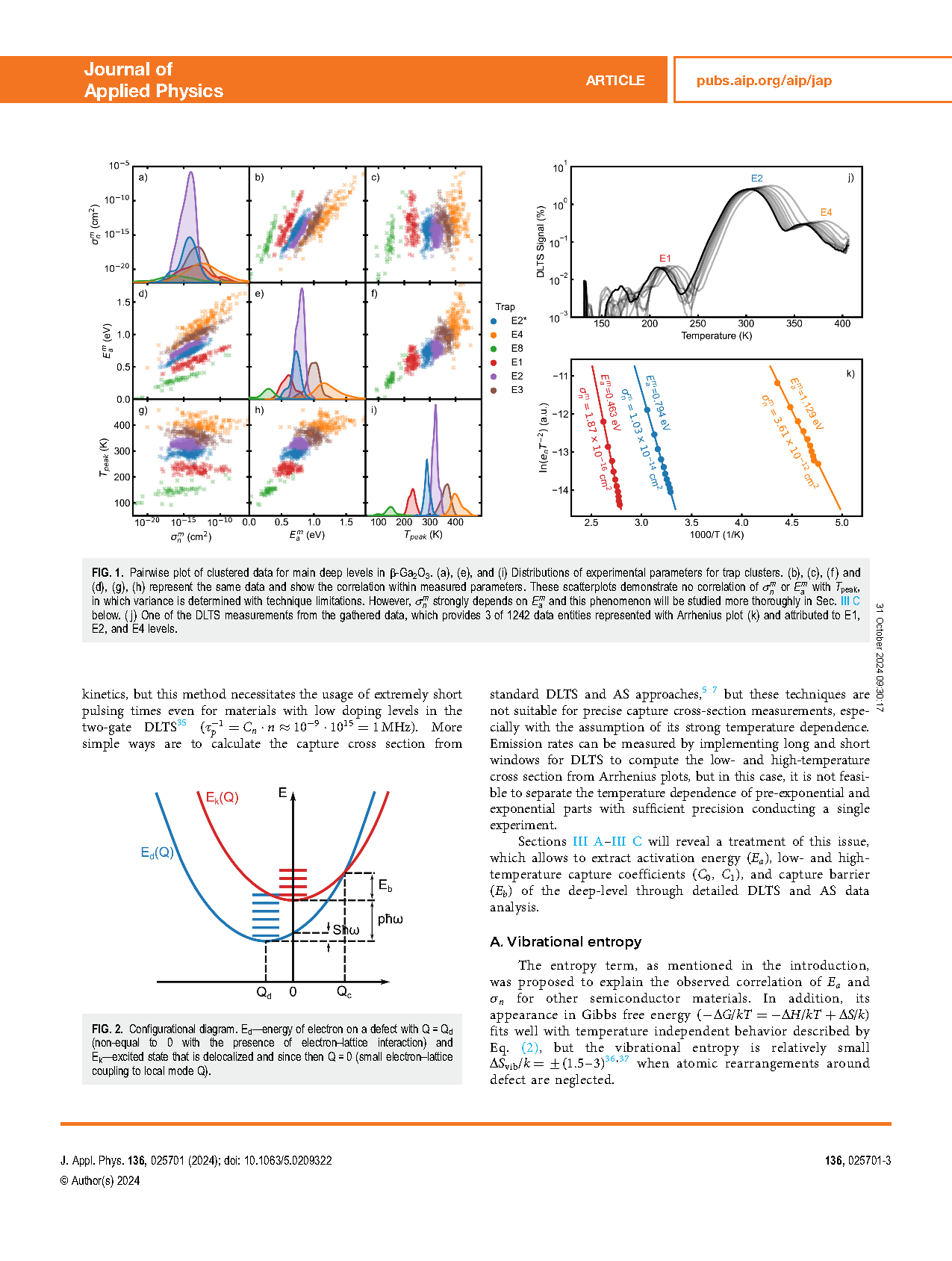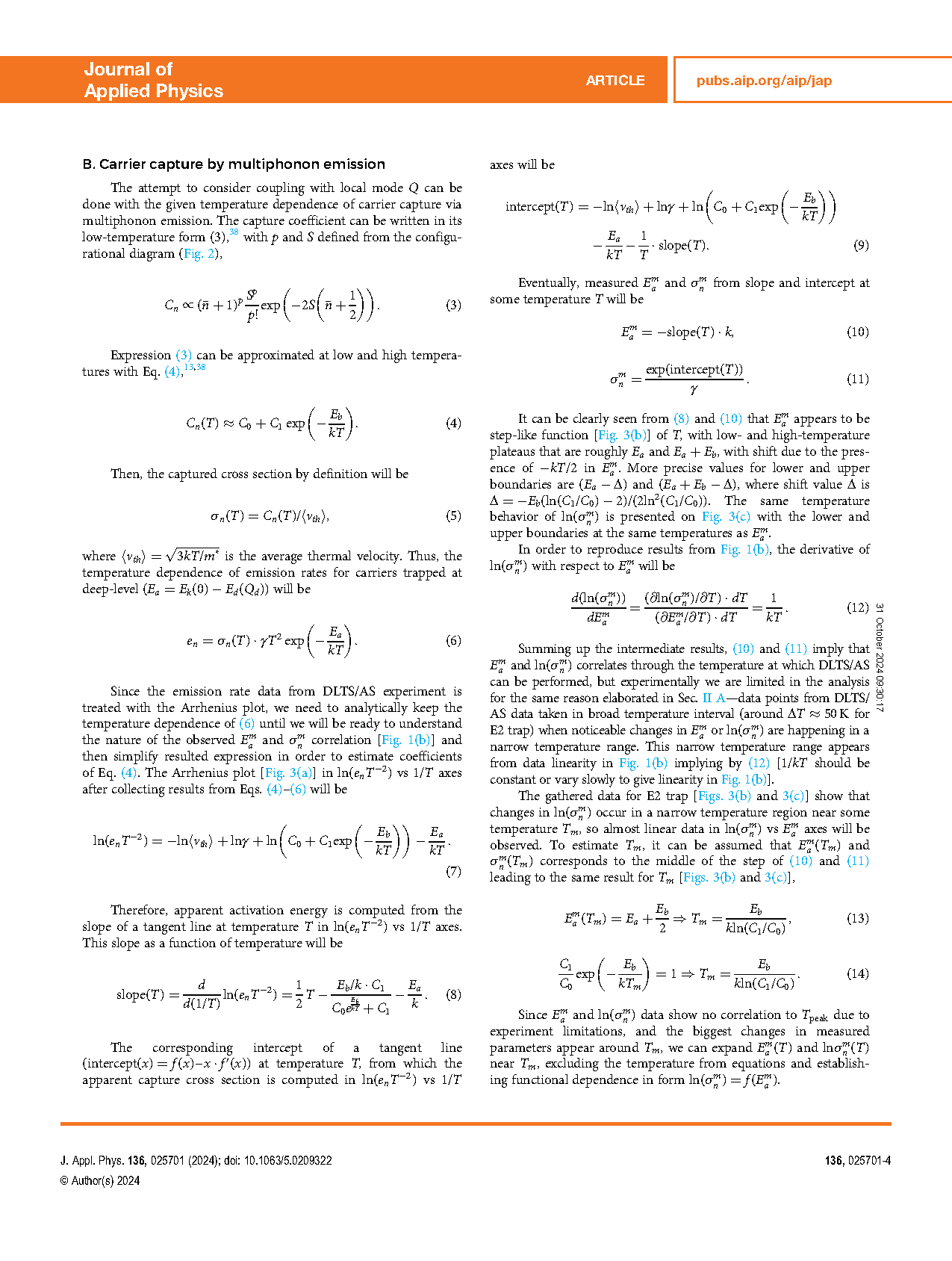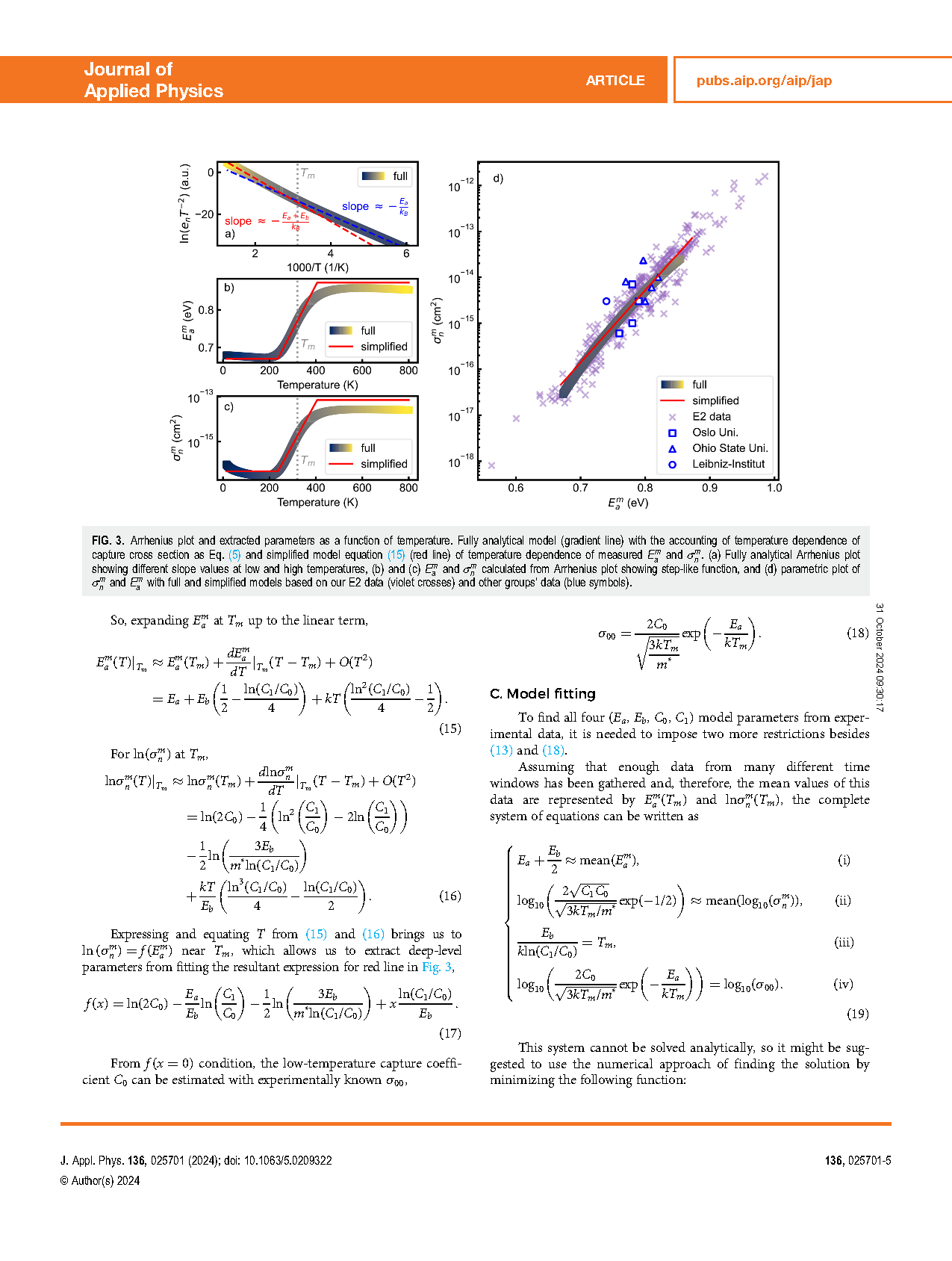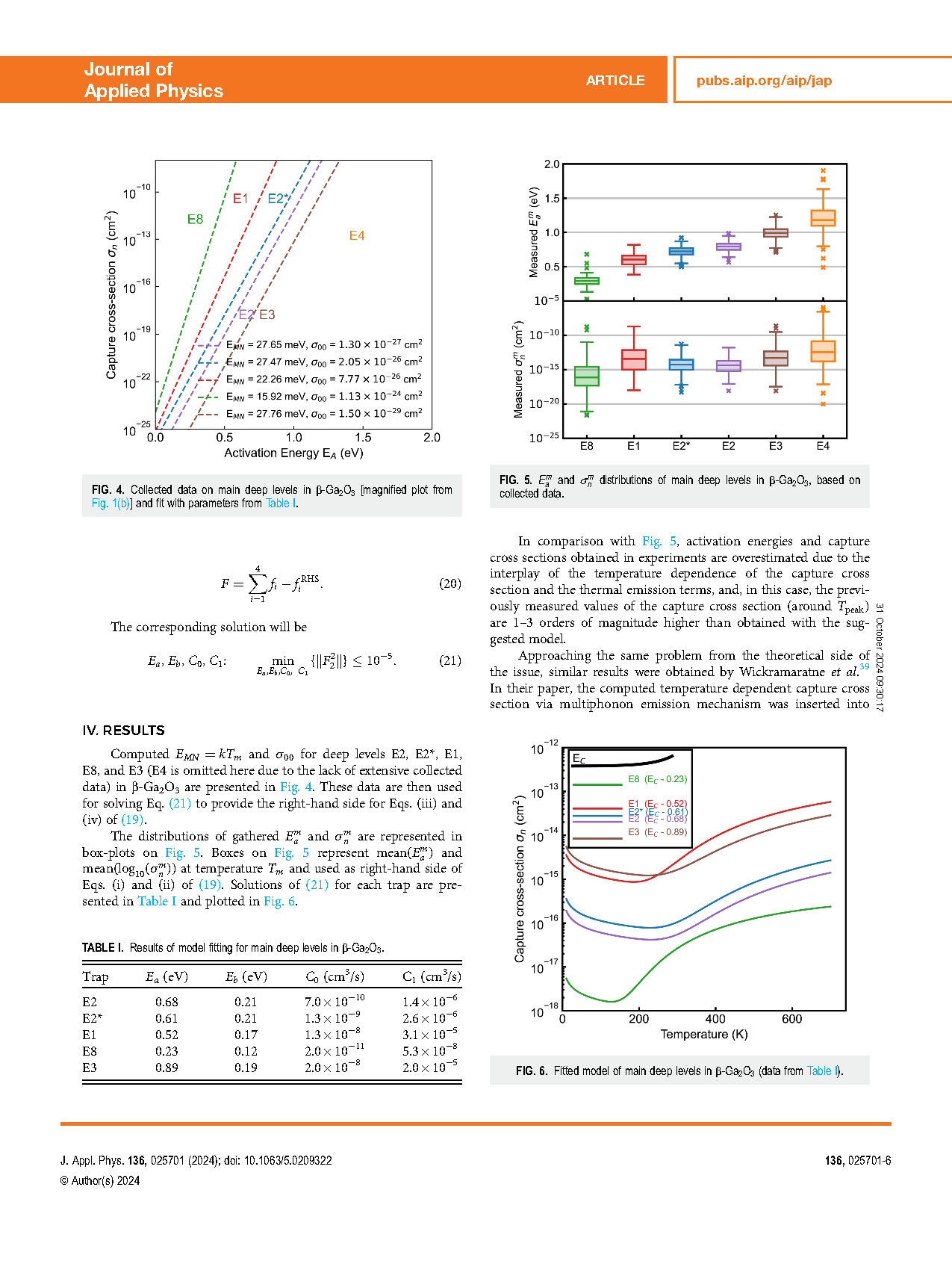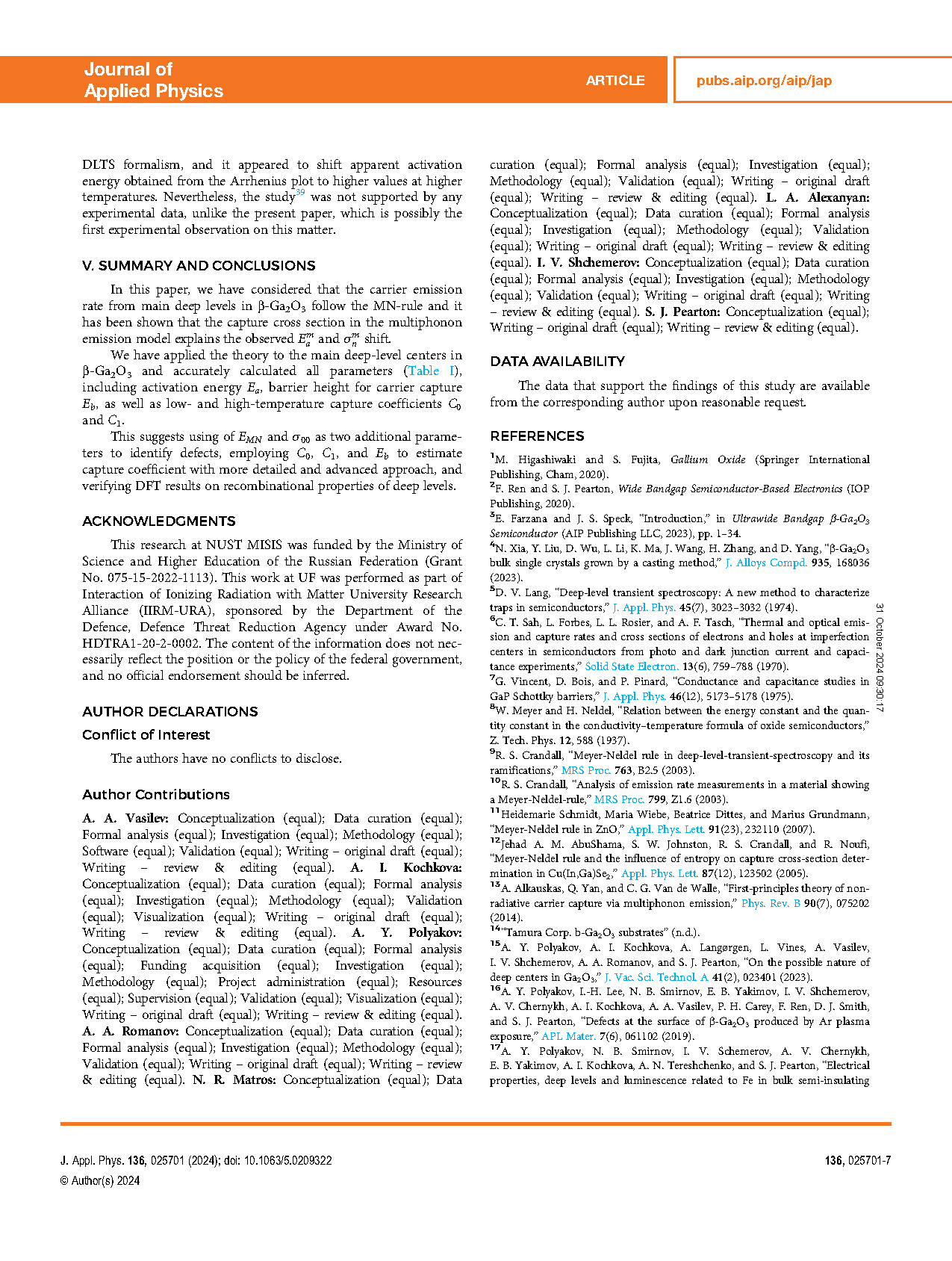
【International Papers】Observation of temperature-dependent capture cross section for main deep-levels in β-Ga₂O₃
日期:2024-12-30阅读:535
Researchers from the National University of Science and Technology MISIS have published a dissertation titled " Observation of temperature-dependent capture cross section for main deep-levels in β-Ga2O3" in Journal of Applied Physiology.
Abstract
Direct observation of the capture cross section is challenging due to the need for extremely short filling pulses in the two-gate Deep-Level Transient Spectroscopy (DLTS). Simple estimation of the cross section can be done from DLTS and admittance spectroscopy data but it is not feasible to distinguish temperature dependence of pre-exponential and exponential parts of the emission rate equation with sufficient precision conducting a single experiment. This paper presents experimental data of deep levels in β-Ga2O3 that has been gathered by our group since 2017. Based on the gathered data, we propose a derivation of apparent activation energy (Eam) and capture cross section (σnm) assuming the temperature dependent capture via the multiphonon emission model, which resulted in a strong correlation between Eam and σnm according to the Meyer–Neldel rule, which allowed us to estimate low- and high-temperature capture coefficients C0 and C1 as well as capture barrier Eb. It also has been shown that without considering the temperature dependence of capture cross section, the experimental values of σn are overestimated by 1–3 orders of magnitude. A careful consideration of the data also allows to be more certain identifying deep levels by their “fingerprints” ( Ea and σn) considering two additional parameters ( EMN and σ00) and to verify the density functional theory computation of deep-level recombination properties.

FIG. Configurational diagram. Ed—energy of electron on a defect with Q = Qd (non-equal to 0 with the presence of electron–lattice interaction) and Ek—excited state that is delocalized and since then Q = 0 (small electron–lattice coupling to local mode Q).
DOI:
https://doi.org/10.1063/5.0209322

